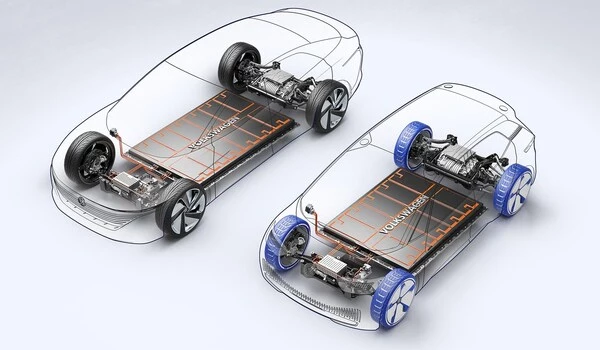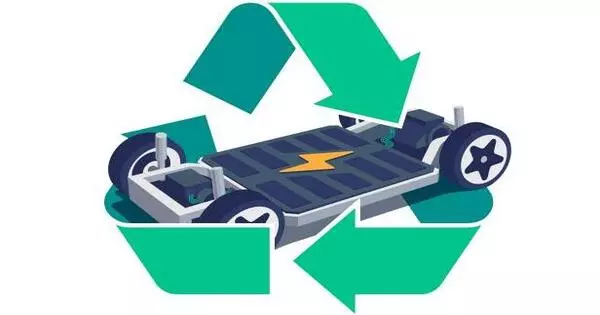Developing an electric vehicle battery that performs well in all seasons is a top priority for automakers. While lithium-ion batteries, which are commonly used in electric vehicles (EVs), have advanced significantly in recent years, they continue to face challenges in extreme temperatures.
Scientists have created a fluorine-containing electrolyte for lithium-ion batteries that maintain high charging performance in cold climates and seasons. They also discovered why it works so well. Many electric vehicle owners are concerned about how effective their batteries will be in extremely cold weather. New battery chemistry may now have solved that issue.
The main issue with today’s lithium-ion batteries is the liquid electrolyte. This important battery component transports charge-carrying particles known as ions between the battery’s two electrodes, allowing the battery to charge and discharge. However, at subzero temperatures, the liquid begins to freeze. In cold regions and seasons, this condition severely limits the effectiveness of charging electric vehicles.
To address this issue, scientists from the Department of Energy’s (DOE) Argonne and Lawrence Berkeley national laboratories created a fluorine-containing electrolyte that performs well even at sub-zero temperatures.
Our research has thus demonstrated how to tailor the atomic structure of electrolyte solvents in order to design new electrolytes for sub-zero temperatures. We are patenting our low-temperature, safer electrolyte and are currently looking for an industrial partner to adapt it to one of their designs for lithium-ion batteries.
Zhengcheng
“Our team not only found an antifreeze electrolyte whose charging performance does not decline at minus 4 degrees Fahrenheit, but we also discovered, at the atomic level, what makes it so effective,” said Zhengcheng “John” Zhang, a senior chemist and group leader in Argonne’s Chemical Sciences and Engineering division.
This low-temperature electrolyte shows promise for use in electric vehicle batteries as well as energy storage for electric grids and consumer electronics such as computers and phones. The electrolyte in today’s lithium-ion batteries is a mixture of a common salt (lithium hexafluorophosphate) and carbonate solvents such as ethylene carbonate. The solvents dissolve the salt, resulting in a liquid.
When a battery is charged, the liquid electrolyte transports lithium ions from the anode (graphite) to the cathode (a lithium-containing oxide). These ions migrate out of the cathode and then through the electrolyte into the anode. They travel through the electrolyte at the center of clusters of four or five solvent molecules.

During the first few charges, these clusters collide with the anode surface, forming a protective layer known as the solid-electrolyte interphase. This layer, once formed, functions as a filter. Only lithium ions can pass through the layer, while solvent molecules are blocked. As a result, the anode can store lithium atoms in the graphite structure on charge. Electrochemical reactions release electrons from the lithium during discharge, generating electricity that can power vehicles.
The problem is that in cold temperatures, the electrolyte with carbonate solvents begins to freeze. As a result, it loses the ability to transport lithium ions into the anode on charge. This is because the lithium ions are so tightly bound within the solvent clusters. Hence, these ions require much higher energy to evacuate their clusters and penetrate the interface layer than at room temperature. For that reason, scientists have been searching for a better solvent.
The researchers looked into several fluorine-containing solvents. They were able to determine which composition had the lowest energy barrier for releasing lithium ions from clusters at subzero temperatures. They also discovered why that particular composition worked so well at the atomic level. It was determined by the position and number of fluorine atoms within each solvent molecule.
The team’s fluorinated electrolyte retained stable energy storage capacity for 400 charge-discharge cycles at minus 4 F in tests with laboratory cells. Even at that subzero temperature, the capacity was equivalent to that of a room-temperature cell with a conventional carbonate-based electrolyte.
“Our research has thus demonstrated how to tailor the atomic structure of electrolyte solvents in order to design new electrolytes for sub-zero temperatures,” Zhang said. The antifreeze electrolyte has an added benefit. It is much safer than the current carbonate-based electrolytes because it does not catch fire. “We are patenting our low-temperature, safer electrolyte and are currently looking for an industrial partner to adapt it to one of their designs for lithium-ion batteries,” Zhang explained.
















